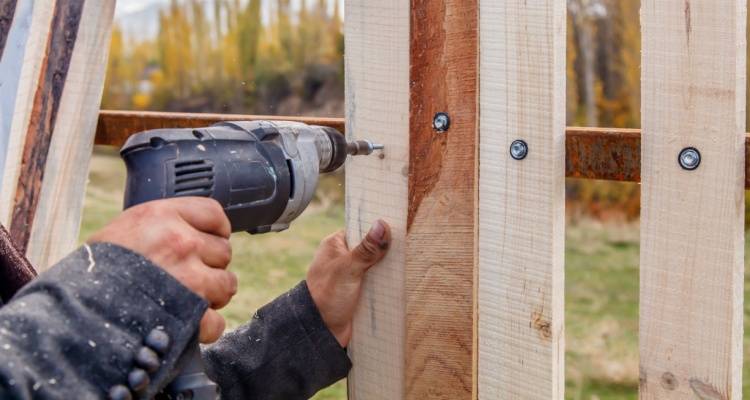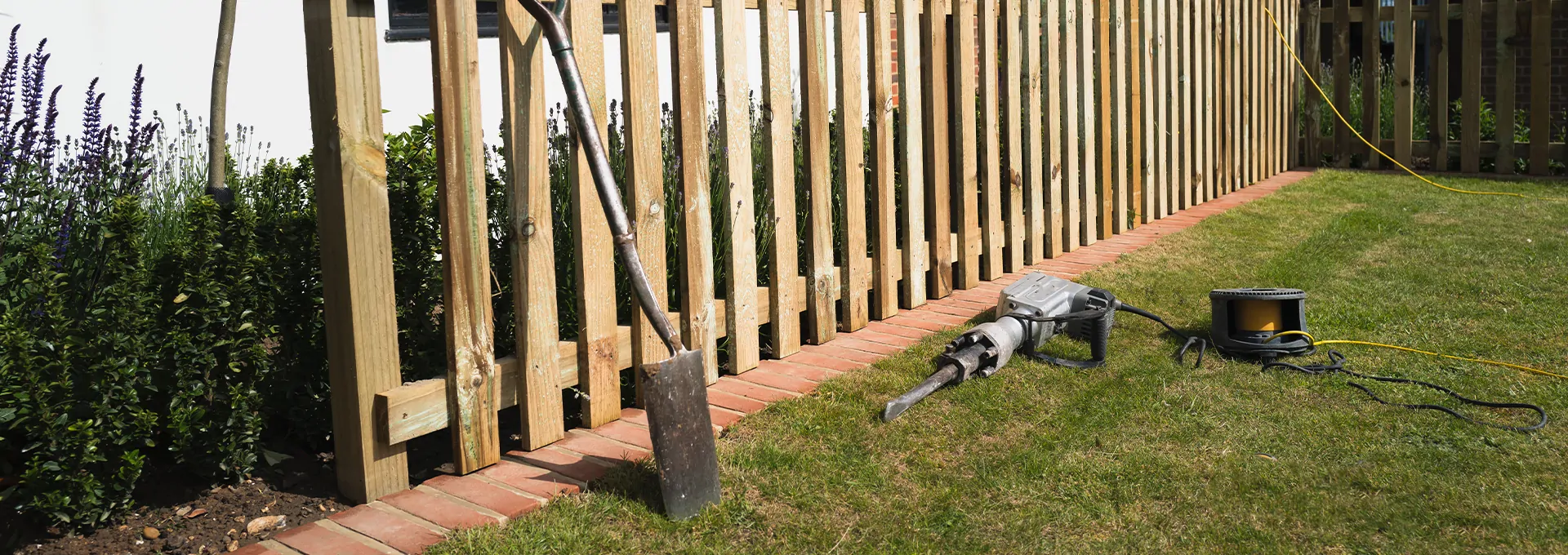Timber fences are a beautiful and functional addition to any property, offering privacy, security, and aesthetic appeal. However, maintaining the beauty and integrity of a timber fence requires regular care and attention. With the right approach, you can ensure your fence remains a stunning feature of your landscape for many years. Here are seven essential tips for preserving the long-lasting beauty of your timber fence.
Read more: 10 Factors to Consider When Choosing Timber Fencing
7 Tips for Long-Lasting Beauty of Timber Fences
1. Choose the Right Wood Type

The longevity and appearance of your timber fence begin with the type of wood you choose. Different wood species have varying levels of durability, resistance to rot, and susceptibility to insect damage. When selecting wood for your fence, consider options known for their strength and resilience.
Cedar: Cedar is a popular choice for timber fences due to its natural resistance to decay and insects. It contains natural oils that act as preservatives, making it less prone to warping and splitting. Cedar also weathers beautifully, developing a silver-gray patina over time if left untreated.
Redwood: Redwood is another excellent option for fences, particularly in regions with high moisture levels. It is resistant to rot and insect damage and has a rich, warm color that adds elegance to any landscape.
Pressure-Treated Pine: For those on a budget, pressure-treated pine is a cost-effective choice. The wood is treated with chemicals to resist rot, decay, and insect damage. While it requires more maintenance than cedar or redwood, it can be a durable option if properly cared for.
Tip: When selecting wood for your fence, consider factors such as climate, budget, and desired appearance. Investing in high-quality wood will pay off in the long run by reducing the need for frequent repairs and replacements.
Read more: How Much Does Timber Fencing Cost in 2024
2. Apply a Protective Finish

One of the most effective ways to maintain the beauty of your timber fence is by applying a protective finish. A good finish not only enhances the wood’s natural beauty but also provides a barrier against the elements, such as UV rays, moisture, and insects.
Stain: A wood stain penetrates the wood fibers, providing deep protection while allowing the natural grain to show through. Stains come in various shades, from transparent to semi-transparent and solid, offering different levels of color and protection. Transparent stains highlight the wood’s natural beauty, while solid stains offer more color and UV protection.
Sealant: A sealant creates a waterproof barrier on the surface of the wood, protecting it from moisture and preventing warping and cracking. Some sealants also include UV blockers to protect against sun damage.
Paint: Painting your timber fence offers the highest level of protection against the elements. Paint forms a thick, opaque layer that shields the wood from UV rays, moisture, and insects. However, painted fences require more maintenance, as the paint can chip and peel over time.
Tip: For best results, apply a protective finish to your fence shortly after installation and reapply it every two to three years. Be sure to clean the fence thoroughly before applying any finish to ensure proper adhesion.
Read more: Top 7 Wonderful Timber Fence Color For 2024
3. Regular Cleaning and Maintenance

Regular cleaning is essential for keeping your timber fence looking its best. Over time, dirt, mildew, and algae can accumulate on the surface of the wood, leading to discoloration and decay. By cleaning your fence regularly, you can prevent these issues and keep the wood looking fresh.
Cleaning: To clean your timber fence, use a mixture of water and mild detergent. Scrub the surface with a soft brush to remove dirt and grime. For tougher stains, such as mildew or algae, consider using a wood cleaner or a mixture of vinegar and water.
Pressure Washing: While pressure washing can be an effective way to clean a timber fence, it should be done with caution. Using too much pressure can damage the wood fibers and cause splintering. If you choose to pressure wash your fence, use a low-pressure setting and hold the nozzle at least two feet away from the surface.
Tip: Clean your fence at least once a year, preferably in the spring or fall. Regular cleaning will not only enhance the appearance of your fence but also extend its lifespan by preventing the buildup of harmful substances.
4. Inspect and Repair Damage Promptly

Regular inspections are crucial for maintaining the structural integrity and beauty of your timber fence. Over time, weather, insects, and physical impact can cause damage to the wood, leading to issues such as rot, cracks, and loose boards. By inspecting your fence regularly and addressing any damage promptly, you can prevent small problems from becoming major repairs.
Inspecting: Check your fence for signs of damage at least twice a year. Look for cracks, splinters, rot, insect infestations, and loose or warped boards. Pay special attention to areas where the wood comes into contact with the ground, as these are more susceptible to moisture and rot.
Repairing: If you notice any damage, repair it as soon as possible to prevent further deterioration. Replace any rotting or severely damaged boards, and use wood filler to repair small cracks and holes. Tighten or replace loose nails or screws, and reinforce any weak or wobbly sections of the fence.
Tip: Regular maintenance and prompt repairs will save you time and money in the long run by preventing costly replacements and ensuring your fence remains strong and beautiful.
5. Protect Against Insects and Pests
Insects and pests can pose a significant threat to the longevity and appearance of your timber fence. Termites, carpenter ants, and wood-boring beetles are particularly destructive, as they can cause extensive damage to the wood.
Preventing Infestations: To protect your fence from insect damage, consider using wood that is naturally resistant to pests, such as cedar or redwood. You can also apply a wood preservative that contains insecticides to deter pests. Regularly inspect your fence for signs of insect activity, such as small holes, sawdust, or mud tubes.
Dealing with Infestations: If you discover an insect infestation, address it immediately to prevent further damage. Depending on the severity of the infestation, you may need to treat the affected area with an insecticide, replace the damaged wood, or consult a professional pest control service.
Tip: Keep vegetation, mulch, and debris away from the base of your fence, as these can attract insects and create a moist environment that promotes decay.
6. Minimize Exposure to Moisture
Moisture is one of the biggest threats to the longevity of a timber fence. Prolonged exposure to water can lead to rot, warping, and mold growth, all of which can compromise the structural integrity and appearance of your fence. To protect your fence from moisture damage, take steps to minimize its exposure to water.
Proper Installation: When installing your fence, ensure that the wood does not come into direct contact with the ground. Use concrete or gravel at the base of the posts to prevent moisture from seeping into the wood. Additionally, make sure the fence is properly sloped to allow water to drain away from the structure.
Gutters and Drainage: If your fence is located near a roofline, ensure that gutters and downspouts are properly installed to direct water away from the fence. Poor drainage can cause water to pool at the base of the fence, leading to rot and decay.
Tip: Consider installing a drip line or trench around the base of your fence to direct water away from the wood. This simple measure can significantly reduce the risk of moisture damage and extend the life of your fence.
7. Maintain the Surrounding Landscape

The landscape around your timber fence plays a significant role in its long-term health and appearance. Overgrown vegetation, poor soil drainage, and accumulated debris can all contribute to the deterioration of your fence. By maintaining the area around your fence, you can prevent these issues and ensure your fence remains in top condition.
Trimming Vegetation: Keep trees, shrubs, and vines trimmed away from your fence. Overgrown vegetation can trap moisture against the wood, leading to rot and mold growth. Additionally, tree branches and roots can cause physical damage to the fence if they grow too close.
Soil Drainage: Ensure that the soil around your fence is well-drained to prevent water from pooling at the base. Poor drainage can lead to waterlogging, which can cause the wood to rot. If necessary, install drainage solutions, such as French drains or swales, to direct water away from the fence.
Clearing Debris: Regularly clear leaves, branches, and other debris from the base of your fence. Accumulated debris can create a moist environment that promotes decay and attracts insects.
Tip: A well-maintained landscape not only enhances the beauty of your fence but also protects it from potential damage. Regularly inspect and care for the area around your fence to keep it in optimal condition.
Conclusion
A timber fence is a beautiful and valuable addition to any property, but it requires regular care and maintenance to keep it looking its best. By following these seven tips—choosing the right wood, applying a protective finish, cleaning and maintaining the fence, inspecting and repairing damage, protecting against insects, minimizing moisture exposure, and maintaining the surrounding landscape—you can ensure your timber fence remains a stunning feature of your outdoor space for years to come. With a little effort and attention, your fence can continue to provide privacy, security, and beauty for decades.





